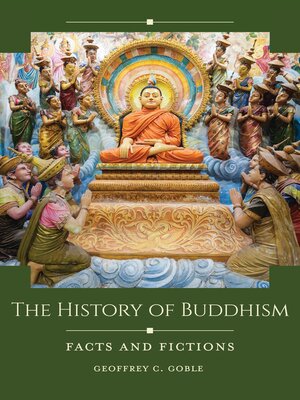The History of Buddhism
ebook ∣ Facts and Fictions · Historical Facts and Fictions
By Geoffrey C. Goble

Sign up to save your library
With an OverDrive account, you can save your favorite libraries for at-a-glance information about availability. Find out more about OverDrive accounts.
Find this title in Libby, the library reading app by OverDrive.



Search for a digital library with this title
Title found at these libraries:
| Library Name | Distance |
|---|---|
| Loading... |
One of the world's most popular religions, Buddhism is also one of the most misunderstood. This reference overviews misconceptions related to Buddhism and reveals the truths behind the myths.
Buddhism is practiced by millions of adherents around the world. Originating in ancient India, it spread throughout Asia and then to the West, and it exists in multiple traditions. Despite its popularity, it is also the subject of many misconceptions. This book examines those misconceptions along with the historical truths behind the myths.
The book begins with an introduction that places Buddhism in its historical and cultural contexts. This is followed by chapters on particular erroneous beliefs related to the religion. Chapters explore whether Buddhism is a singular tradition, if it is a religion or a philosophical system, if it is rational and scientific, whether the Buddha was an ordinary human, and other topics. Each chapter summarizes the misconception and how it spread, along with what we now believe to be the underlying truth behind the falsehood.
Quotations and excerpts from primary source documents provide evidence for the mistaken beliefs and the historical truths. The book closes with a selected, general bibliography.
Buddhism is practiced by millions of adherents around the world. Originating in ancient India, it spread throughout Asia and then to the West, and it exists in multiple traditions. Despite its popularity, it is also the subject of many misconceptions. This book examines those misconceptions along with the historical truths behind the myths.
The book begins with an introduction that places Buddhism in its historical and cultural contexts. This is followed by chapters on particular erroneous beliefs related to the religion. Chapters explore whether Buddhism is a singular tradition, if it is a religion or a philosophical system, if it is rational and scientific, whether the Buddha was an ordinary human, and other topics. Each chapter summarizes the misconception and how it spread, along with what we now believe to be the underlying truth behind the falsehood.
Quotations and excerpts from primary source documents provide evidence for the mistaken beliefs and the historical truths. The book closes with a selected, general bibliography.







